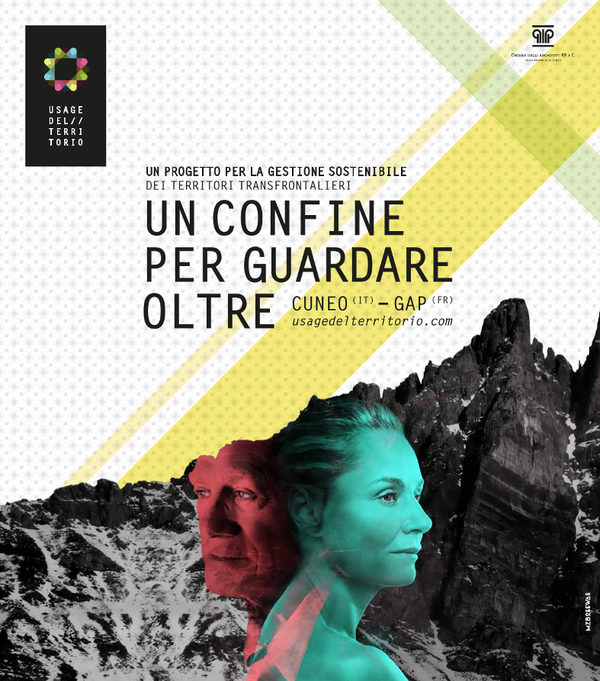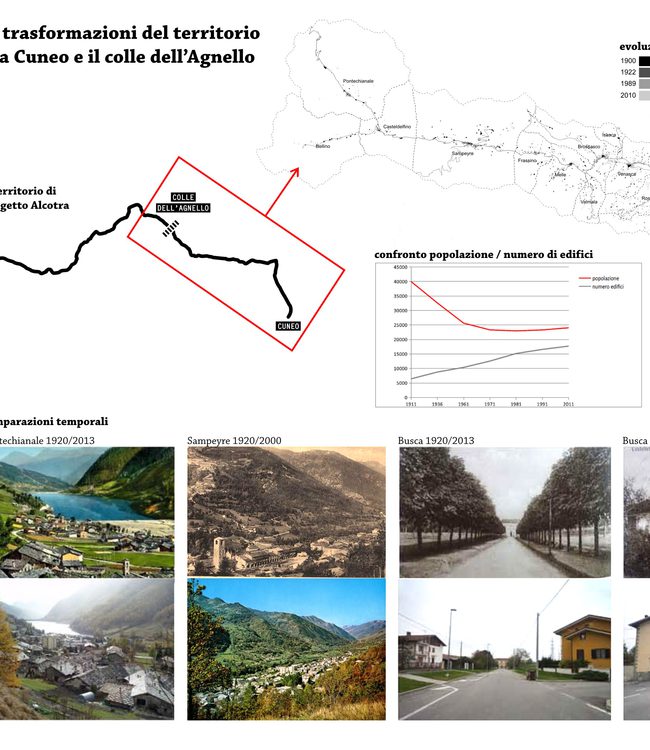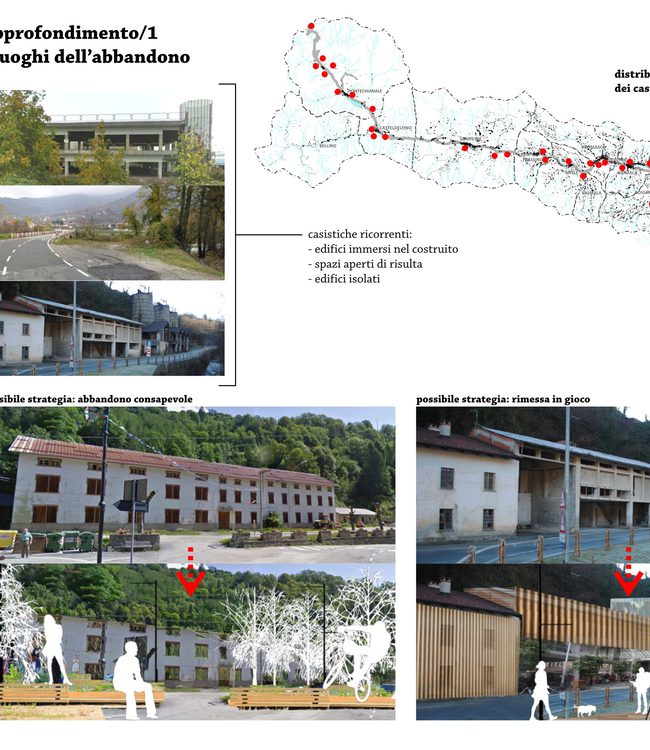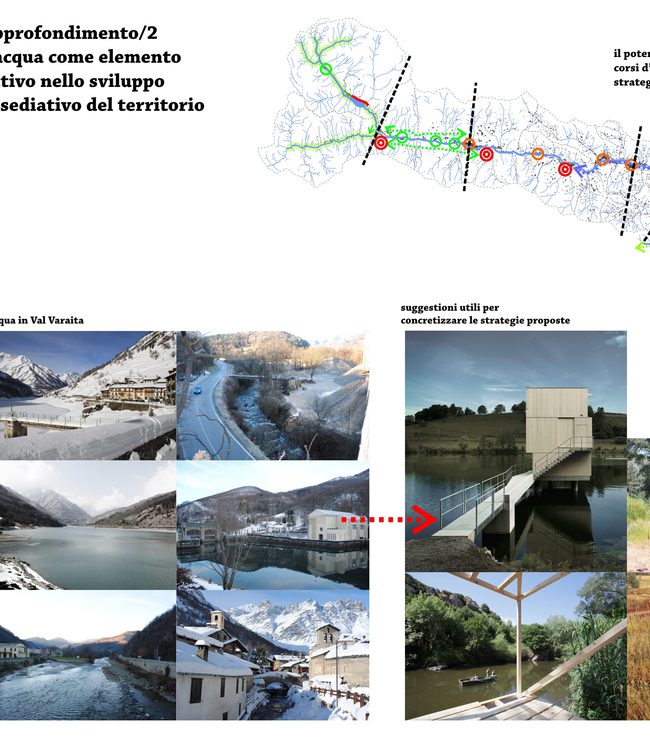Usage del Territorio - Per una gestione sostenibile dei territori transfrontalieri.
Vincitore
Edizione 2016
Ambito C
Soggetto ProponenteOrdine Architetti P.P.C. della Provincia di Cuneo
‘Usage del Territorio' is a cross-border research project devised to delve into the issue of land consumption in the Italian-French territory that connects Cuneo and Gap, passing through the Colle dell'Agnello. Starting with a reconnaissance to see the effects on the landscape of the land consumption that took place after the second World War, the work aimed at the construction of a wide framework on which to base the visions of future development, with a focus on the Varaita Valley. This choice stems from the acknowledgement of the current institutional and administrative reorganisation - elimination of provincial authorities and transition to mountain unions - and the subsequent difficulty in considering the territory and its problems as a whole. The persisting provincialism hinders a shared concept of territory with a supra-local outlook able to funnel different strategies concerning environment, landscape, tourism, energy, etc., within physical development scenarios. The project tried to answer questions such as ‘how much, how and what have we built in the past' and ‘how much, how and what should we build in the future' with strategies able to combine the need for local development with nature and landscape protection requirements. In order to implement a wide-area development strategy and facilitate the sharing process, addressing administrators, experts and residents, four strategic pillars were identified as useful insights to observe the territory and build a consistent and possible future project. The aforesaid strategic pillars are: the valley's main infrastructure corridor (as a privileged place to observe and connect both the landscape peculiarities and the recurring situations of abandonment), the waterways (first and foremost the Varaita River, ideal catalyst of linear projects able to bring different areas together around the issues of sustainable tourism), the open spaces (fields, woods, pastures and empty spaces, regarded as opportunities to balance the environment anthropization), and the mountain villages (catalogued and prioritised to assess realistic recovery scenarios). The choice to anchor the visions of development to direct actions on the territory, arises from the need to stress the planning and pre-figurative capacity of architects, planners and landscapers who, together with administrators and residents, have to bring landscape at the forefront of social debate. The pre-figurative capacity becomes a means to capture the attention, materialise a problem or solution, and shift reasoning to a more easily accessible and repeatable level upon which local development, landscape protection and promotion can be built.

Localizzazione del progetto
, Piemonte, CuneoMotivazione della Giuria
The initiative, carried out in a cross-border area between Italy and France, dealt with the issues related to landscape management and enhancement in an effective and creative way. The project shows how national, regional and local borders can be seen first and foremost as opportunities to improve territory and landscape quality rather than obstacles. The project, chosen for its innovative way of prefiguring transformative solutions, focuses on land consumption in order to build a widearea development strategy and facilitate a shared decision-making process for landscape promotion and enhancement. Using an effective communication approach, the project underlines the central role of all the initiatives aimed at promoting the restoration and renewal of the existing heritage, as well as at dramatically reducing the expansion of built-up areas. Building on a preliminary territory reconnaissance, ‘Usage del Territorio' builds a strategic framework on which the visions of future development - in terms of environment, landscape, tourism and energy - have to be based, identifying important requirements of environmental, territorial and landscape protection.



